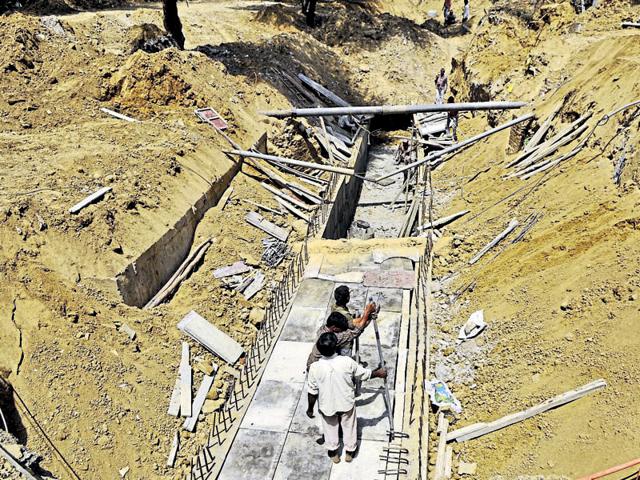Good monsoon means floods in Gurgaon
The meteorological department’s forecast of a good monsoon has brought cheers across the country but the news might be ominous for Gurgaon with the Chennai floods still fresh in the memory
Gurgaon

The meteorological department’s forecast of a good monsoon has brought cheers across the country but the news might be ominous for Gurgaon with the Chennai floods still fresh in the memory.
The forecast that the country will receive 94cm rain brings relief to the drought-hit areas but for Gurgaon it may sound like a flood warning. In 2015, when Gurgaon received 3% less rain than the normal, the city was waterlogged, roads caved in and life came to a standstill.
About 60% of the city is concreted and the nullahs (rainwater drains) have disappeared, thereby not allowing rainwater to seep into the ground. Besides, low lying areas have been converted for industrial and residential purposes. Environmentalists are of the view that this situation will lead to urban flooding and road cave-ins during the monsoon.
“Nullahs are very important ground water recharge zones. All nullahs need to be marked as Natural Conservation Zone (NCZ), as per the provisions of the Regional Plan 2021. As NCZ, nullahs need to be protected in their natural state and not covered or concreted,” Chetan Agarwal, an environment analyst, said.
According to the Centre for Disaster Management, Gurgaon, the problem of floods is accentuated by man-made barriers such as the network of roads that obstruct the natural flow of water. Often, the modern drainage systems cannot cope with the volume of water or are blocked by garbage.
With no dedicated sewage drain in the city, the stormwater drains are used to carry domestic sewage and industrial waste. This is in contempt of the NGT order that says, “Drains in the city must be obstruction-free. No rainwater drain should be covered or used to carry sewage.”
Activists say that concreting nullahs is a public policy disaster that increases the risk of floods.
Many residents said that even 20mm rainfall in one hour can cause flooding in the city. “We don’t know what the priority of the civic authorities is,” said a green activist on condition of anonymity. “By concreting the drains, they lose the capacity to handle extreme storm events that can lead to urban floods.”
“The civic authorities are planning a disaster. Though they know that the rainwater drains should not be cemented, as they are created for a bigger propose (groundwater recharge),” Vivek Khamboj, an environmentalist, said.
When HT contacted Haryana Urban Development Authority (Huda), they denied of covering and filling up natural and storm water drains. “Such things are not allowed. If any are found, we will take corrective action,” Huda administrator Hardeep Singh said.
Stay updated with all the Breaking News and Latest News from Mumbai. Click here for comprehensive coverage of top Cities including Bengaluru, Delhi, Hyderabad, and more across India along with Stay informed on the latest happenings in World News.
Stay updated with all the Breaking News and Latest News from Mumbai. Click here for comprehensive coverage of top Cities including Bengaluru, Delhi, Hyderabad, and more across India along with Stay informed on the latest happenings in World News.





